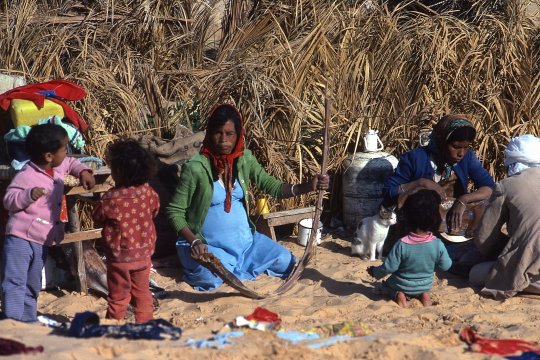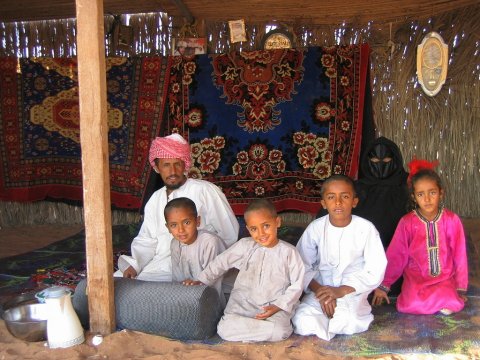|
John Tyman's Cultures in Context Series EGYPT and the SAHARA www.johntyman.com/sahara |
|
4.6 Clothing : 283-298 |
| . |
|
John Tyman's Cultures in Context Series EGYPT and the SAHARA www.johntyman.com/sahara |
|
4.6 Clothing : 283-298 |
| . |
 |
| .291. The clothes worn by the children are often brightly coloured -- and warm too, as it was winter when the author visited them. (North of In Amenas) |
 |
| .293. Marriage among Bedouin is seen more as a social contract than as a love match. Girls are married when they are 16-20 years of age, most often to one of their cousins -- as a means of strengthening family ties. There is a bride price of sorts, some of which is retained by the bride herself in case things don't work out. Marriages can be dissolved easily and no stigma is attached. (Bedouin family in Oman courtesy: Wikipedia) |

![]()
Text and photos by John Tyman
unless otherwise indicated.
Intended for Educational Use
Only.
Contact Dr. John Tyman at johntyman2@gmail.com
for more information regarding
licensing.
![]()
www.hillmanweb.com
Photo processing, Web page layout,
formatting and hosting by
William
Hillman ~ Brandon, Manitoba ~ Canada